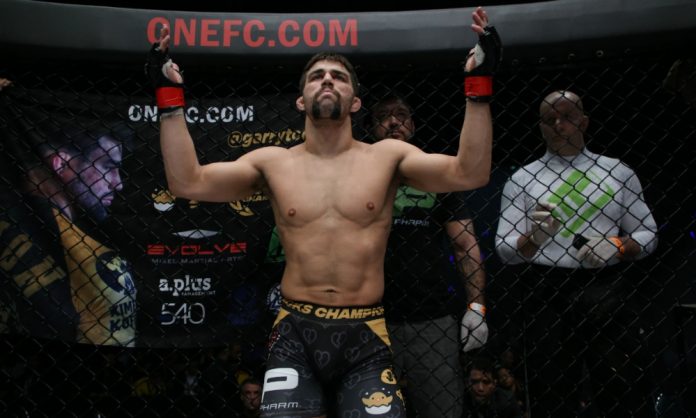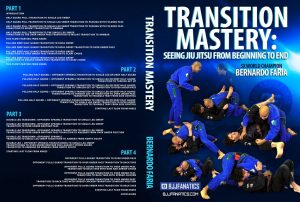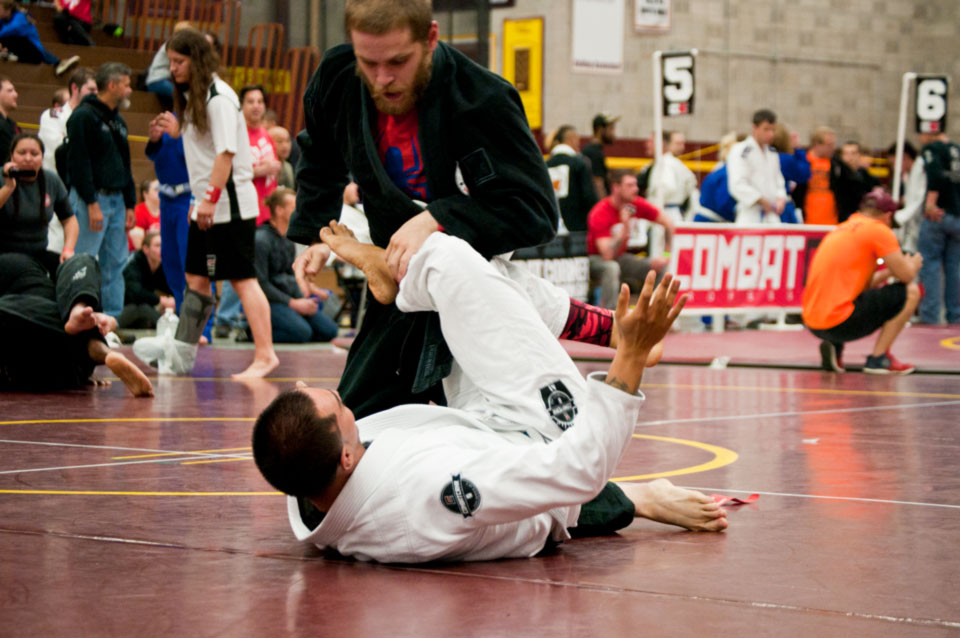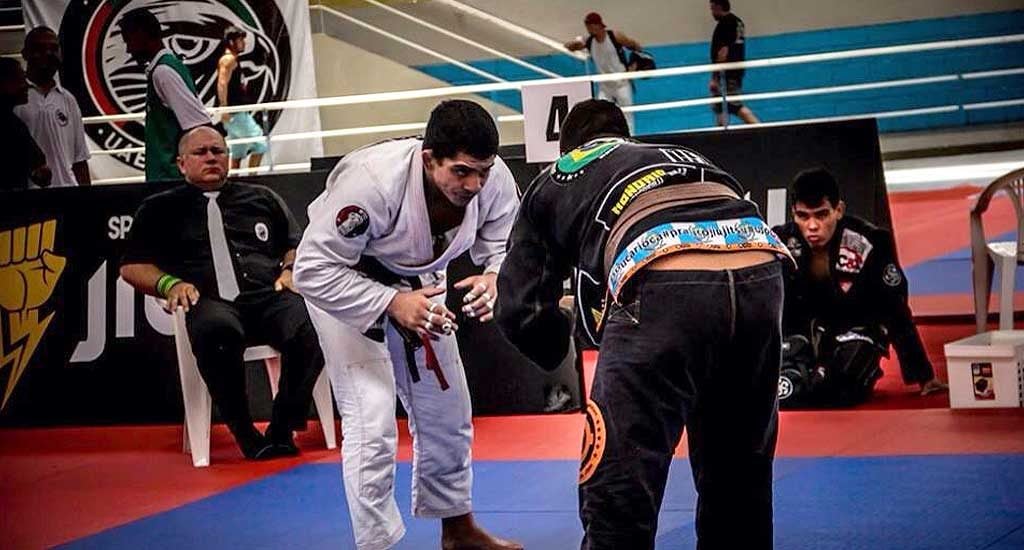
Competing in martial arts is always a scary and intense experience. I don’t care if you have all the experience in the world, you’re going to get anxiety. You’re also going to act differently than you do in the same situations in training. It is just given. Being involved in a match, and watching one from the sidelines are two completely different experiences. Speaking of which, you need to make sure that you always have someone watching your matches. In fact, they need to be watching what you’re doing and not doing rather than the match. To this effect, you need to really put together a solid BJJ corner if you want to have any positive result in high-level competition.
Whenever you’re at a BJJ tournament it’s impossible not to notice all the men and women yelling at the competitors. And I don’t mean yelling to cheer or boo. Under most competition settings, you can see the whole team cheering and yelling from the stands. that’s support and it plays a huge role in one’s competitive success. However, you also see either one, two or more people on the edge of the mats, trying to instruct the competitor. This person or persons are what we call the BJJ corner. They’re just as integral to your success as a grappler as is any sort of technical, tactical and physical preparation. So, make sure you choose them wisely.

The Importance Of A Good BJJ Corner
The term BJJ corner is first and foremost not the most logical one. It is one that everyone in martial arts knows, though. It has its roots in boxing, where a few people stand in the fighter’s corner to support and instruct them. The same support team is also present in MMA, where despite the shape of the cage, they’re still referred to as the “corner”. So, regardless of where people are in relation to the Jiu-Jitsu mats at a tournament, they’re your cornermen.

While you’re performing against another trained opponent, you need someone to help you with perspective. Your corner has the task of yelling out instructions to you, both for offense and defense. They’re able to see what your opponent is doing much more clearly and can make better decisions. Moreover, they’re crucial to inform you how much time is left. Even more importantly, they also take note of the points and advantages and help guide you towards being more aggressive or calmer, depending on the situation.
In a manner of speaking, the people in your BJJ corner, particularly the coach is much like someone playing a game with you, just without the controller.
Who To Include
The number of people you include in your BJJ corner is not set. At the very least you need one person there, and it needs to be your coach. In some cases, it can actually be another team member, as long as they’re advanced enough to know how to corner you. What is important about your lead man in the corner is that they know your game. It is also crucial that they know how to asses the opponent and analyze their game on the go. As such, it may be a teammate that you drill and train with that fits you better than your coach. It doesn’t have to be the head instructor of your Academy that leads your corner. It needs to be the one that is going to guide you best.
The others in your corner are optional but do come in handy. The second person is the one that has the task of taking note of the points, looking at the time and “gently” trying to remind the referee about stuff. Finally, there’s the video guy/girl. Their task is to focus on keeping the camera pointing at you clearly during the match. In many cases, the points and time person can also record what’s happening.

The Emergency BJJ Corner
In certain situations, you’re going to end up competing somewhere alone. If you compete a lot, this is going to happen at least once. When you end up somewhere only with a friend or significant other who doesn’t train, you’ll still need a corner. It doesn’ matter if they do not know what you’re doing. Getting a good recording of you and perhaps letting you know what the opponent’s doing is enough.
Even if you’re completely alone at a tournament, you should do your best to get a makeshift BJJ corner. That means asking someone you know, or even someone you’ve competed against to help you out. BJJ people are generally very friendly so it won’t be an issue for anyone. At the very least, get someone to get a recording of your match.
Final Words
With everything said and done, you never actually fight “one on one” in Jiu-Jitsu. Despite the fact that two people are directly exchanging techniques, each has a team behind them. The people in the BJJ corner on both sides are just as important as the competitors themselves. Very often, whether a competitor listens to the corner or not determines the outcome of a match. So, think ahead and organize a good BJJ corner for yourself. You’ll be grateful you did once the referee says “fight!’


![Darce Choke Encyclopedia – Origins, Mechanics and Variations [2024] BJJ, choke, Brabo, BJJ Darce Choke, D'arce Choke, Darce BJJ Choke](https://bjj-world.com/wp-content/uploads/2017/11/JungPoirierLeeYahoo-218x150.jpg)








![I Got Your Back Jake Straus DVD Review [2025] I Got Your Back Jake Straus DVD Review](https://bjj-world.com/wp-content/uploads/2025/03/i-got-your-back-jake-straus-dvd-review-218x150.png)
![Shotgun Aoki Locks Mateusz Szczecinski DVD Review [2025] Shotgun Aoki Locks Mateusz Szczecinski DVD Review](https://bjj-world.com/wp-content/uploads/2025/03/shotgun-aoki-locks-mateusz-szczecinski-dvd-review-218x150.png)


![Upper Body Chain Attacks Janine Mocaiber DVD Review [2025] Upper Body Chain Attacks Janine Mocaiber DVD Review](https://bjj-world.com/wp-content/uploads/2025/03/upper-body-chain-attacks-janine-mocaiber-dvd-review-218x150.png)
![The Empty Half Guard Michael Currier DVD Review [2025] The Empty Half Guard Michael Currier DVD Review](https://bjj-world.com/wp-content/uploads/2025/03/empty-half-guard-michael-currier-dvd-review-218x150.png)
![Roger Gracie Guard Passing System DVD Review [2025] Roger Gracie Guard Passing System DVD Review](https://bjj-world.com/wp-content/uploads/2025/02/roger-gracie-guard-passing-system-dvd-review-324x235.png)
![Mastering Control From Top Position Trent Hidlay DVD Review [2024] Mastering Control From Top Position Trent Hidlay DVD Review](https://bjj-world.com/wp-content/uploads/2024/11/control-from-top-position-trent-hidlay-dvd-review-100x70.png)
![Creating Back Exposure Luke Griffith DVD Review [2025] Creating Back Exposure Luke Griffith DVD Review](https://bjj-world.com/wp-content/uploads/2025/01/creating-back-exposure-luke-griffith-dvd-review-100x70.png)
![360 Degrees Guard Retention Thiago Abud DVD Review [2024] 360 Degrees Guard Retention Thiago Abud DVD Review](https://bjj-world.com/wp-content/uploads/2024/10/360-degrees-guard-retention-thiago-abud-dvd-review-100x70.png)




![Tricks for Unstoppable Takedowns Georges St Pierre DVD Review [2024] Tricks for Unstoppable Takedowns Georges St Pierre DVD Review](https://bjj-world.com/wp-content/uploads/2024/12/unstoppable-takedowns-georges-st-pierre-dvd-review-100x70.png)

![Effectively Passing The Guard Luke Griffith DVD Review [2025] Effectively Passing The Guard Luke Griffith DVD Review](https://bjj-world.com/wp-content/uploads/2025/01/passing-the-guard-luke-griffith-dvd-review-100x70.png)

![Leg Locks From Beginner To Advanced Dan Manasoiu DVD Review [2024] Leg Locks From Beginner To Advanced Dan Manasoiu DVD Review](https://bjj-world.com/wp-content/uploads/2024/12/leg-locks-from-beginner-to-advanced-dan-manasoiu-dvd-review-100x70.png)
![Compass Kneebar System Charles Harriott DVD Review [2024] Compass Kneebar System Charles Harriott DVD Review](https://bjj-world.com/wp-content/uploads/2024/11/compass-kneebar-system-charles-harriott-dvd-review-100x70.png)





![Countering Triangles And Omoplatas Adam Mazin DVD Review [2024] Countering Triangles And Omoplatas Adam Mazin DVD Review](https://bjj-world.com/wp-content/uploads/2024/10/countering-triangles-and-omoplatas-adam-mazin-dvd-REVIEW-100x70.png)


![Osoto Gari for Jiu Jitsu Jackson Nagai DVD Review [2024] Osoto Gari for Jiu Jitsu Jackson Nagai DVD Review](https://bjj-world.com/wp-content/uploads/2024/10/osoto-gari-for-jiu-jitsu-jackson-nagai-dvd-review-100x70.png)

![Best Marcelo Garcia Techniques by Team Marcelo Garcia DVD Review [2025] Best Marcelo Garcia Techniques by Team Marcelo Garcia DVD Review](https://bjj-world.com/wp-content/uploads/2025/02/best-marcelo-garcia-techniques-dvd-review-100x70.png)


![Crossing and Spinning Steps To Attack Israel Hernandez DVD Review [2024] Crossing and Spinning Steps To Attack Israel Hernandez DVD Review](https://bjj-world.com/wp-content/uploads/2024/09/spinning-steps-to-attack-israel-hernandez-dvd-review-100x70.png)
![Lockdown Quickstart Guide Cameron Mellott DVD Review [2025] Lockdown Quickstart Guide Cameron Mellott DVD Review](https://bjj-world.com/wp-content/uploads/2025/03/lockdown-quickstart-guide-cameron-mellott-dvd-review-100x70.png)
